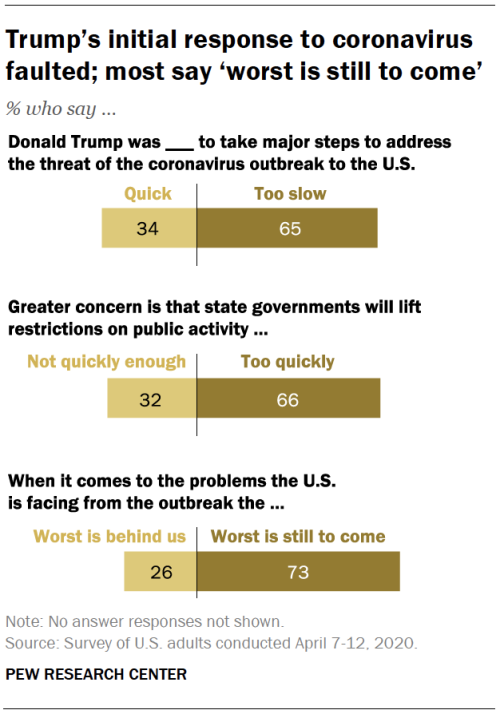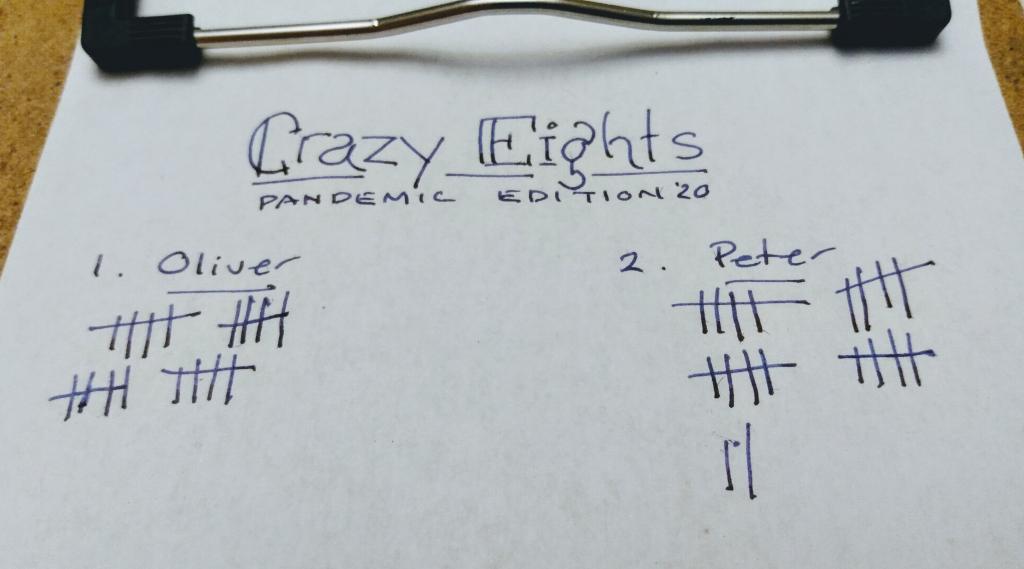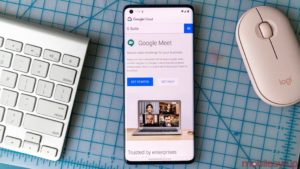The short answer: there are tough times ahead, but, as always, there are opportunities for those who think and act in the right way. For example, step back to 1957. The world was fighting a pandemic, the so-called Asian flu that originated in China in early 1957, spread to Singapore and then appeared in the United States near the end of 1957. In the UK, nine million people contracted the “H2N2 avian influenza” (out of a population of about 50 million), with 5.5 million seeking medical attention and 14,000 people dying.1 More than 160,000 people in the United States died (out of a population of about 175 million), with global estimates of one to four million fatalities. In December 1957, squarely in the middle the of this pandemic, a company called the Tokyo Telecommunications Engineering Corporation introduced its transistor radio, the TR-63, under the brand name Sony, to the United States.
The product had clear and obvious limitations compared to floor-standing radios. Audio quality, for example, could best be described as tinny. But in classic disruptive fashion, it provided new benefits. It was affordable and portable. Teenagers could listen to baseball games or rock-and-roll music out of the earshot of disapproving parents. It went on to sell more than seven million units. Toshiba and Sharp jumped into the market, helping to power Japan’s economic miracle of the 1960s. And, thus began the communications and information age.
The 1957-58 pandemic didn’t stop innovation and growth, and the COVID-19 pandemic, despite the health and economic havoc it will wreak around the globe, won’t either. Of course, organizations are going to face tough, even dire, choices about how to move forward in the face of once-in-a-generation uncertainty. But studying history suggests that companies with the foresight to think and act in the right way also have a once-in-a-generation opportunity to drive innovation and growth and create substantial separation between them and their competitors.
The text that follows covers three topics.
- Two key lessons from past “big-event disruptions,” namely that some (but not all) of the changes they spur stick past the event and that innovation opportunities continue to exist.
- Imperatives across the three distinct time frames leaders need to simultaneously consider: Preserve the present by “flattening the economic curve” to ensure solvency and flexibility, build a rapid response strategy for the inevitable upturn and own the future by connecting long-term vision and near-term curve-bending activities.
Explore other COVID-19 disruption resources.
- Three leadership behaviors that create the currency to pursue a bold agenda in the midst of difficult times: being realistically positive, seeking opportunities in constraints and embracing altruism.
Lessons from the past
As Mark Twain famously remarked, “History doesn’t repeat itself, but it often rhymes.” The particular movie we are living in now has its own unique plot, will have inevitable twists and turns and no one can be sure yet how and when it will end. However, we’ve seen this genre of movie before. There are two common lessons from “big-events,” whether they be pandemics like the 1918-19 Spanish or the 1957-58 Asian flus, economic shocks like the panic of 1872, the Great Depression or the global financial crisis or geopolitical shocks like World Wars, the oil shock of the 1970s or the September 11, 2001 terrorist attacks.
Lesson 1: (Some) change sticks
In the midst of big-event disruptions, extreme viewpoints emerge suggesting that life will whipsaw back to normalcy once dust settles—or that everything will permanently change. Our read is that these events indeed trigger changes that can perpetuate for long periods of time. One simple and obvious example is revamped airport security after the September 11 terrorist attacks. Or consider the rise of small, fuel efficient cars after the oil shocks of the early 1970s.
How can you identify what changes in customer behavior will persist and what changes will prove temporary? Look at the customer’s job to be done.
Sometimes change can be more subtle. For example, the catalyst of the global financial crisis was defaults in the subprime mortgage market. Experts believe the sting of seeing so many foreclosures is at least one reason why the property ownership rate of today’s millennials is sharply lower than that of previous generations at similar ages.2
How can you identify what changes in customer behavior will persist and what changes will prove temporary? Look at the customer’s job to be done, or the specific problems the customer is trying to solve in a particular circumstance. Jobs to be done are stable. What changes are the circumstances within which people have those jobs, the barriers to solving for them, the available solutions and how the customer defines quality. Examining how a big-event disruption impacts each of these four factors can surface “dislocations” to the status quo that are likely to endure. For example:
-
New circumstances: Government response to the COVID-19 pandemic has forced billions of people
 into the new circumstance of working and schooling from home. For those with children, the job of “educate my kids” has not changed—it’s the same job they had before being in “lockdown.” But now they have to explore solutions in a completely different circumstance: at home vs. at school.
into the new circumstance of working and schooling from home. For those with children, the job of “educate my kids” has not changed—it’s the same job they had before being in “lockdown.” But now they have to explore solutions in a completely different circumstance: at home vs. at school.
Parents are being forced to experiment with online learning solutions, and some might ultimately decide they prefer these solutions (although these authors will attest that the experience has strengthened their already deep appreciation for the teachers in their kids’ lives!). Similarly, it is very possible that the use of videoconferencing solutions for meetings persists past the current crisis, as people learn that technology is now good enough to provide a good experience and that they save the hassle and headache of travel.
-
New barriers: Typically, in the aftermath of big-event disruptions, system-wide changes impose new barriers and therefore change the way customers prioritize solutions. After the global financial crisis, for example, governments around the globe changed the regulatory infrastructure for many financial services companies. That made it harder for certain classes of customers to get access to credit, which had cascading effects in many markets. It would not be surprising to see significant healthcare reform after COVID-19. Perhaps telemedicine, which has been a fringe solution, could become a mainstream solution as efforts seek to keep hospitals free from being contagion hotspots.
-
New solutions: Temporary changes in circumstances can force a customer to try new solution, which they might ultimately decide gets the job done better than existing solutions. Consider, for example, a two-week strike in 2015 that closed a select number of stations on the London Underground. Commuters that used those stations had to experiment with new routes. When the strikes ended, about 5 percent of customers kept using the new routes.3 Or take the evergreen job of “get my hair cut.” One of the authors, out of desperation, was forced to experiment with a self-service solution that turned out surprisingly well, though the permanence of the resulting behavior change remains an open question. Of course, innovators can also develop and launch solutions that cement change. A truly world-class online learning program for preschoolers, for example, could stick well beyond the current crisis.
-
New definitions of quality: When making decisions to “hire” a product or service to do a job, customers (often implicitly) consider functional, emotional and social dimensions. If customers spend enough time following different behaviors, it can rearrange which of those criteria are most important. For example, even when social distancing protocols are relaxed, customers may continue to place premiums on safety and look for financial solutions that minimize face-to-face interaction or physical transfer of cards or cash.
Lesson 2: Innovation persists
In 2009, Innosight published The Silver Lining, focused on how to innovate in a downturn. One of the book’s key points is that tough times can be a hidden boon for innovation because they force innovators to do things they should have been doing already, like having a laser-like focused on customers and their needs, keeping costs low to maintain room for iteration and developing business models that support affordability and wide market reach.4 That book and more recent research suggests that we should expect four specific things to happen during and after the COVID-19 crisis:
1. Existing companies will make bold moves to separate themselves from competitors.

Shantanu Narayan couldn’t have had worse timing. He took over as the CEO of Adobe in late 2007. The company had seemingly reached maturity, with products like Photoshop and PageMaker stagnating. Nimble software-as-a-service (SaaS) competitors were emerging. And the onslaught of the global financial crises would challenge even the strongest incumbent companies. In the face of these challenges, Narayen and his team undertook a bold transformation strategy. In 2008, they tested a software-delivered model of Photoshop. A few years later Adobe “burned the boats,” stopped producing packaged software and went to a fully SaaS model. In 2009, Adobe purchased Omniture for approximately $1.8 billion, a price 40 percent lower than its pre-crisis peak (but 2.5 times above its mid-crisis trough!). That acquisition served as the cornerstone of Adobe’s efforts to build a new growth business related to advertising services and analytics. From 2009 to 2019 Adobe’s revenues tripled and its stock price went up by 29 percent a year.5
2. Game-changing “reverb disruption” startups will be created.
While the global financial crisis was unfolding, Sequoia, a prominent venture capital firm, circulated a presentation titled “RIP Good Times.” Certainly, purse strings tightened. But history showed that innovation, as always, finds a way. The 2007-2009 period was a great period for the founding of some of the world’s most well-known “unicorns,” a name given to companies that cross $1 billion in valuation while privately held. For example, 2007 marked the founding of Dropbox, a cloud storage service; and Flipkart, an Indian e-commerce company acquired in 2018 by Walmart for $16 billion.
Game-changing startups that “reverb” off the big-event disruption can take off. Airbnb, founded during the height of the recession in 2008, appealed to thrifty millennials looking for a cheap way to travel.
More specifically, game-changing startups that “reverb” off the big-event disruption can take off. For example, Airbnb, an online marketplace for “places to stay and things to do,” was founded during the height of the recession in 2008. Its service appealed to thrifty millennials looking for a cheap way to travel, as did Uber’s car-sharing model. Lingering distrust in traditional finance providers helped to spur novel payments providers. For example, Jack Dorsey founded Square, the financial services startup known for its square-shaped white credit card reader, in 2009. “There is no better time to start a new company or a new idea than a depression or recession,” Dorsey, who also helped to found Twitter, reflected. “There [are] a lot of people who need to get really creative to create something new.”6 Stripe, another disruptive financial services company, was founded in the same year.
All told, almost 90 companies that would go on to reach unicorn status were founded from 2007 to 2009, 13 of which were acquired and 23 of which have gone public. That collection of companies had an aggregate valuation at the beginning of 2020 of almost half a trillion dollars.7
3. Innovations that “love the low end” will prosper.
Downturns can be great times to introduce simple and affordable solutions that connect with consumers who have tighter purse strings or are naturally frugal given continued uncertainty. After the post-War boom, 1948-1949 featured a recession. In 1948, the McDonald brothers fired all their carhops, closed their flagship store, installed new equipment and reopened three months later with a novel approach for preparing food. Instead of having a single skilled cook who would custom-make orders, McDonald’s simplified the menu so that less-skilled people could prepare the same thing over and over again. All McDonald’s menu items could be eaten one-handed while consumers were driving. It was Henry Ford’s assembly line approach applied to food service. The brothers called the model the “Speedee Service System.” It made it much easier to hire and fire cooks and allowed McDonald’s to lower prices and prepare food faster. The new business model began to take off. In 1953, the company started franchising its stores to other entrepreneurs. Franchise owner Ray Kroc bought out the brothers in 1954 and scaled McDonald’s into today’s global powerhouse.8
Sometimes what appear at first to be high-cost solutions can appeal to frugal customers. Step back to 1961. The United States was emerging from a recession. Procter & Gamble was getting ready to commercialize disposable diapers. The diapers were expensive—almost 10 times the price of today’s diapers (adjusted for inflation)—so the company naturally thought wealthy parents would snatch up the product. Much to P&G’s surprise, lower-income consumers embraced the diapers. It turns out the convenience factor mattered more to consumers who didn’t have their own washer and dryer. Disposable diapers reduced trips to the laundromat and gave consumers—many of whom were hourly workers—the precious gift of time.
4. Up-and-coming disruptors will flourish.
Up-and-coming disruptors thrive in downturns. They follow the basic pattern of disruptive innovation, transforming existing markets or creating new ones by making the complex simple or the expensive affordable.
Research in
The Silver Lining found a particular type of company thrived in downturns: up-and-coming disruptors. These specifically are companies that follow the basic pattern of disruptive innovation, transforming existing markets or creating new ones by making the complex simple or the expensive affordable, but had not yet reached $1 billion in revenue. Based on the historical analysis, the book suggested watching a handful of companies, including Alibaba, EnerNOC, Facebook, LinkedIn and iRobot. An investment in that portfolio would have outperformed the market over the next decade by 3.2x.
What are some up and coming disruptors to watch now? Several on our list are units within existing companies. For example, while Grab is often described as the Southeast Asian equivalent of Uber, a large portion of its $14 billion valuation is its financial arm, which provides loans to small businesses and micro-insurance for drivers.
Similarly, in 2014 Square launched Square Capital, which has now facilitated close to 1 million loans and advances. Square’s ability to deeply understand the finances of its customers provides a unique advantage in targeting a segment often ignored by leading banks.
Finally, in 2014 Amazon.com bought Twitch, an e-gaming platform for $970 million. Its broadcasting of eSports competition, music broadcasts, creative content and more is well positioned to surge in 2020, and beyond.
There are a number of still relatively young startups that also could be on the brink of breaking through. Nubank, a Brazilian based digital bank founded in 2013, has more than 20 million customers across many Latin American countries. It offers an easy solution to the significant unbanked population across Latin America, with the ability to avoid bank branches and provide contactless payments features that could have particular post-pandemic appeal. Food delivery services are certainly well positioned to drive growth through the COVID-19 crisis, and DoorDash’s investment in automated food delivery technology makes it a particularly interesting company to watch. Palantir, a data analytics company founded by early Facebook investor Peter Thiel, has been quietly but quickly securing major analytics contracts, and could be positioned to enter a hypergrowth phase as people increasingly try new techniques to make sense of an increasingly confusing world. Finally, cloud content manager and file sharing provider Box is emerging as a vital tool along Zoom and Slack for a suddenly massively distributed workforce.
A playbook for growth through uncertainty
Realizing these opportunities is not easy in the face of seemingly never-ending uncertainty. While many leaders face an inexorable pull to focus purely on operational issues, it is critical to consider three different imperatives as they build their strategic response.
Imperative 1: Preserve the present (immediately)
In the beginning of a big-event disruption, the urgent priority is to stay operational and solvent. As Innosight Managing Partner Patrick Viguerie and co-author Elizabeth Stephenson frame it, companies need to “flatten the curve” of the pandemic’s economic impact with eight deliberate actions, including making cash king, driving revenue resilience, embracing uncertainty and being kind.9
Some of the chapter titles in The Silver Lining suggest the key components of how innovators should join the quest to preserve the present during times of constraints and high uncertainty:
Re-feature to Cut Costs … Customer-centricity should be a core component of cost-cutting efforts. After all, you can’t do more with less until you can define what more means. That means figuring out the job to be done of the customer (employee, stakeholder, channel partner).
Master Smart Strategic Experiments … It never has been easier to experiment, which makes it even more important to do it with the proper discipline. Like a good scientist, start with a hypothesis. Design an experiment with clear objectives. Make a prediction about what you think will happen. Test in a way in which you can measure and assess your prediction. You never know for sure, so have HOPE (hypothesis, objective, prediction, execution plan).10
Share the Innovation Load … People think successful entrepreneurs seek out risk. That’s not right. Successful entrepreneurs smartly manage risk by sharing it as widely as they can. Now more than ever, companies should embrace open innovation and find smart ways to collaborate.
Prune Prudently … Take a hard look at what is in your innovation portfolio. Cut at least 50 percent of it. Your resources need to be focused on places where they can have the greatest impact. Many of the projects that you cut are likely to be “zombies” that shuffle along, sucking the innovation life out of your organization.11 Kill the zombies. It is an absolute no-regret thing to do; you should have done it already; you need to do it now. Remember the five keys to killing zombies:
-
-
Create a checklist. Shutting projects down can be very emotional. Setting and sharing a shortlist of criteria before the process begins helps participants to view the process as being as rational as possible. These criteria will be guidelines, not rules, as final decisions will always require subjective judgment. The checklist should reflect a mix of pre-crisis strategic priorities as well as new, post-crisis imperatives; zombie projects will likely be misaligned with both.
-
Involve outsiders. Parents will attest how hard it is to be objective about something you played a part in conceiving. An uninvolved outsider can bring important impartiality to the process.
-
Codify re-usable learning. While obviously the goal of innovation is successful commercialization, learning something that sets you up for future success is also a good outcome. As seminal research into product failure notes, “knowledge gained from failures [is] often instrumental in achieving subsequent successes.”12 So, capture knowledge to maximize the return on your investments in innovation.
-
 Celebrate and communicate success. Any time you innovate future success is unknown. Therefore, learning that an idea is not viable is a successful outcome—as long as that learning happened in a reasonably resource-efficient way. Celebrate a good thing that happens and communicate the good news widely.
Celebrate and communicate success. Any time you innovate future success is unknown. Therefore, learning that an idea is not viable is a successful outcome—as long as that learning happened in a reasonably resource-efficient way. Celebrate a good thing that happens and communicate the good news widely.
-
Provide closure. This idea is ripped straight from Columbia University Professor Rita McGrath’s excellent 2011 Harvard Business Review article on “Failing by Design”: “have a symbolic event—a wake, a play, a memorial—to give people closure.” Without closure, it is too easy for someone, somewhere to revive the zombie.
Imperative 2: Develop a rapid rebound response strategy (6-18 months)
Generally, Innosight guides leaders to approach setting a direction through uncertainty by adopting a future-back mindset.13 In other words, rather than starting from today and thinking about what tomorrow will look like, imagine the metaphorical day after tomorrow and work backwards to today. The general guidance we provide (which is detailed in the April 2020 book Lead from the Future by Innosight partners Mark Johnson and Josh Suskewicz) is to think 5 to 10 years in the future. However, in the midst of a big-event disruption, it is critical to develop a rapid response strategy that positions you to respond flexibly as the world continues to shift. In the midst of the massive uncertainty surrounding the COVID-19 pandemic, that means doing four things:
- Model the spectrum of possible post-crisis equilibria over a defined time period. No one knows what the future will be, so consider the full spectrum of potential outcomes over a 6- to 18-month period.
- Tolerate a range of answers, because the future state is unknown and unknowable, but demand precise assumptions. The goal of the spectrum analysis is to identify what we call “outcome-determining assumptions” that will have the biggest impact on where you land on the spectrum. Make those assumptions as precise as possible by having a time frame and numbers around it. For example, “governments will loosen stay-at-home restrictions” is not precise enough; “by June, 30 percent of the world’s population will be freely moving” is precise enough to track and monitor.
- Analyze and anticipate the impact of dislocated jobs to be done. As discussed above, history teaches us that big-event disruptions dislocate jobs to be done. A good rapid response strategy anticipates what will change and what won’t and is prepared to respond accordingly.
- Develop a mechanism to monitor, test, learn and adjust. The only way to work through uncertainty is to embrace a continual process of learning. In the book Superforecasting, Philip Tetlock and Dan Gardner showed that people who showed a statistically superior ability to predict the seemingly unpredictable regularly updated their forecasts as new data and insights emerged.14
Doing these four things allows the formulation of a coherent but flexible strategy. Executing that strategy requires doing one additional piece of work: developing and deploying supporting capabilities and culture. Agile ways of working are still foreign to many companies. While the massive and sudden shift of work in March 2020 has forced experimentation, most organizations will have to do additional concerted work to ensure that they embed the agility required to respond appropriately.
The article “Breaking Down the Barriers to Innovation” suggests that companies seeking to create new habits should use Behavior Enablers, Artifacts and Nudges (BEANs) to overcome organizational inertia and encourage new habits.15 For example, employees often are afraid to take risks and run experiments because the perceived stigma of failure. Tata Sons, India’s largest conglomerate, offers a prize called “Dare to Try” that celebrates noble failure. Adobe offers a Kickbox program where participants receive a do-it-yourself experimentation kit with a prepaid $1,000 debit card that they can spend without asking for anyone’s approval. Australian software company Atlassian regularly runs premortems, where teams discuss what would happen that would lead their projects to fail, helping to anticipate issues before they happen. These are just a few BEANs that can help organizations to be more adept in ambiguity.
Imperative 3: Own the future (5+ years)
History shows clearly that bold action through big-event disruptions can create substantial, lasting value. It is important to start with a clear point of view of your longer-term future, and your desired role in it, because that informs which near-term actions make the most sense. Generally, Innosight suggests that companies identify the most critical strategic focus areas, which have four components:

- A meaningful WHAT: an important, unsatisfied customer job to be done.
- A significant WHO: a sizable population of potential customers.
- A plausible HOW: a solution that can be achieved without technological miracles.
- A compelling WHY: that fits general trends and capabilities.
Having a clear view of strategic focus areas can highlight game changing moves you can make now, whether that is to double-down on a particular market, shut down or spin off a legacy that is holding you back or make a game-changing acquisition. Ask three questions as you evaluate your future portfolio:
- What underlying trends have been catalyzed by the big-event disruption so they will accelerate? For example, every university head knew that online learning would be mainstream by 2030. That timeline has been accelerated significantly.
- What underlying fault lines have been surfaced by the crisis that creates new opportunities? For example, there is a clear need for an innovative business model that enables high-speed testing at scale.
- What game-changing M&A options are open? Just as Adobe snatched up Omniture in 2009, it is very possible that previously unthinkable opportunities become possibilities for those who think strategically and move quickly.
Conclusion: Building the currency to act aggressively
In the midst of a big-event disruption, there are significant pressures to play it safe and to focus on today. History shows that leaders that are able to not succumb to those pressures have the potential to do something remarkable. There are three ways to build the organizational currency to gain alignment around an aggressive course of action.
First, be realistically optimistic. Don’t downplay the current circumstance, and don’t circle a date in the calendar and proclaim that’s when everything will be back to normal. Don’t overly catastrophize the current circumstance either. Remember the story of Admiral James Stockdale from Jim Collins’ blockbuster Good to Great.16 Stockdale said one reason he was able to survive a brutal experience in a Vietnamese prison camp that broke many soldiers was he confronted the brutal reality of his current situation and held an unwavering belief that he ultimately would get out. Collins called it the “Stockdale Paradox.” Realistic optimism holds that yes, today is hard, yes, tomorrow will be hard, and, yes, someday will be less hard. This mindset shows empathy for today’s struggle but inspires hope about tomorrow’s opportunities.
Second, seek opportunities in constraints. Just about everyone in the world is dealing with some kind of constrained situation. We are rapidly learning new skills, like how to stay alert after hours of Zoom calls or develop creative ways to keep kids occupied. It is a great opportunity to innovate. After all, as Plato wrote, “Necessity is the mother of invention. A need or problem encourages creative efforts to meet the need or solve the problem.” In big and small ways role model that today’s constraints create tomorrow’s opportunities.
Finally, embrace altruism. This is a hard time for everyone. There has not been a better time in recent memory to put frequent and significant donations in the karma bank. Provide help without being asked. When asked to help, go above and beyond. Practice random acts of kindness. Say thank you. These are small things, but they help to create the conditions of trust and support that can lead to a willingness to do different things.
_________
The big-event disruption playbook is certainly not easy to execute, particularly for leaders in industries acutely battered by the COVID-19 crisis. Indeed, the Schumpeterian gales of creative destruction unleashed by big-event disruptions can create extraordinarily tough moments. They also can create extraordinary opportunities for those who approach them with courage, clarity and conviction. COVID-19 is such a moment. It is a moment where you can leapfrog competitors. It is a moment where you can go from industry laggard to industry leader. It is a moment where you can launch market-changing innovations. It is a moment where you can cement your legacy.

A March 2020 Wall Street Journal article describing work on COVID-19 therapies provides a useful summary of how to confront this moment. “In the fight against COVID-19 though we might look forward in doom, one day we will look backward in awe.”17 Indeed, we surely will look back in awe at leaders that successfully navigate disruptive change by mastering the imperatives of preserving the present, developing a robust rapid-response strategy and owning the future.
About the Authors
 Scott D. Anthony is a Senior Partner at Innosight and former Managing Partner of the firm. Based in the firm’s Singapore offices since 2010, he has led Innosight’s expansion into the Asia-Pacific region. He is co-author of Dual Transformation: How to Reposition Today’s Business While Creating the Future (HBR Press). santhony@innosight.com
Scott D. Anthony is a Senior Partner at Innosight and former Managing Partner of the firm. Based in the firm’s Singapore offices since 2010, he has led Innosight’s expansion into the Asia-Pacific region. He is co-author of Dual Transformation: How to Reposition Today’s Business While Creating the Future (HBR Press). santhony@innosight.com
 David S. Duncan is a Senior Partner at Innosight and leads the Financial Services and Innovation Capabilities practices. He is a trusted adviser to top leaders at many of the world’s most iconic companies, helping them to navigate disruptive change, create sustainable growth, and transform their organizations to thrive for the long-term. dduncan@innosight.com
David S. Duncan is a Senior Partner at Innosight and leads the Financial Services and Innovation Capabilities practices. He is a trusted adviser to top leaders at many of the world’s most iconic companies, helping them to navigate disruptive change, create sustainable growth, and transform their organizations to thrive for the long-term. dduncan@innosight.com
About Innosight
Innosight is a strategy and innovation consulting firm that helps organizations navigate disruptive change and manage strategic transformation. Now a member of the Huron Consulting Group, we work with leaders to create new growth strategies, accelerate critical innovation initiatives, and build innovation capabilities. Discover how we can help your organization navigate disruption at www.innosight.com.
Endnotes
- Claire Jackson, “History lessons: the Asian Flu pandemic,” British Journal of General Practice, 2009 Aug 1; 59(565): 622–623, https://www.ncbi.nlm.nih.gov/pmc/articles/PMC2714797/.
- Jung Hyun Choi, Jun Zhu, and Laurie Goodman, “The state of millennial home ownership,” The Urban Institute, July 11, 2018, https://www.urban.org/urban-wire/state-millennial-homeownership.
- Shaun Larcom, Ferdinand Rauch, and Tim Willems, “The upside of London Tube strikes,” CentrePiece, Autumn 2015, http://cep.lse.ac.uk/pubs/download/cp455.pdf.
- Scott D. Anthony, The Silver Lining: An Innovation Playbook for Uncertain Times, Harvard Business Review Press, 2009.
- Scott D. Anthony, Clark G. Gilbert and Mark W. Johnson, Dual Transformation: How to Reposition Today’s Business While Creating the Future, Harvard Business Review Press, 2017.
- Jack Dorsey, “The Power of Curiosity and Inspiration,” Entrepreneurial Thought Leaders, Season 6, Episode 14, February 9, 2011, https://ecorner.stanford.edu/videos/the-power-of-curiosity-and-inspiration-entire-talk/.
- The valuation is a sum of the estimated value of the still privately held companies (~$210B), the price paid for companies that were acquired (~$$75B) and the public market valuation as of January 1 of the publicly listed companies (~$190B)
- Anthony, The Silver Lining, Chapter 7.
- Patrick Viguerie and Elizabeth Stephenson, “Flatten the Curve,” Innosight.com, March 2020, https://www.innosight.com/insight/flatten-the-curve/.
- Scott D. Anthony, The First Mile: A Launch Manual for Getting Great Ideas into the Market, Harvard Business Review Press, 2014.
- Scott D. Anthony, David S. Duncan, and Pontus M.A. Siren, “Zombie Projects: How to Find Them and Kill Them,” Harvard Business Review Online, March 4, 2015.
- Modesto A. Maidique and Billie Jo Zirger, “The new product learning cycle,” Research Policy, Vol 14, Issue 6, December 1985
- Mark W. Johnson and Josh Suskewicz, Lead from the Future: How to Turn Visionary Thinking into Breakthrough Growth, Harvard Business Review Press, 2020.
- Philip E. Tetlock and Dan Gardner, Superforecasting: The Art and Science of Prediction, Crown Business, 2015.
- Scott D. Anthony, Paul Cobban, Rahul T. Nair and Natalie Painchaud, “Breaking Down the Barriers to Innovation,” Harvard Business Review, November-December 2019
- Jim Collins, Good to Great: Why Some Companies Make the Leap … And Others Don’t, HaperCollins, 2001.
- Jeff Colyer, “An Update on the Coronavirus Treatment,” The Wall Street Journal, March 29, 2020, https://www.wsj.com/articles/an-update-on-the-coronavirus-treatment-11585509827.
The post The “Big-Event Disruption” Playbook appeared first on Innosight.

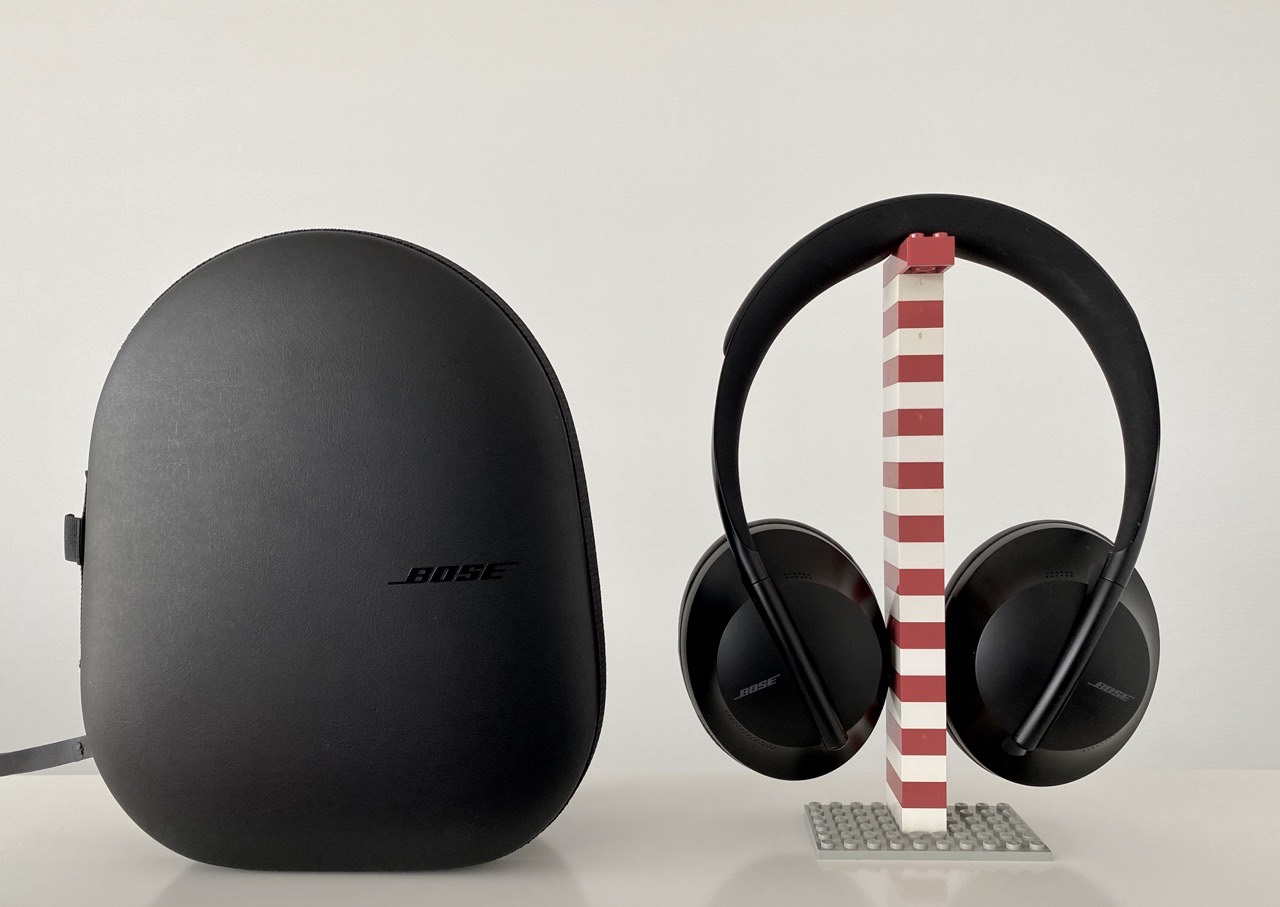


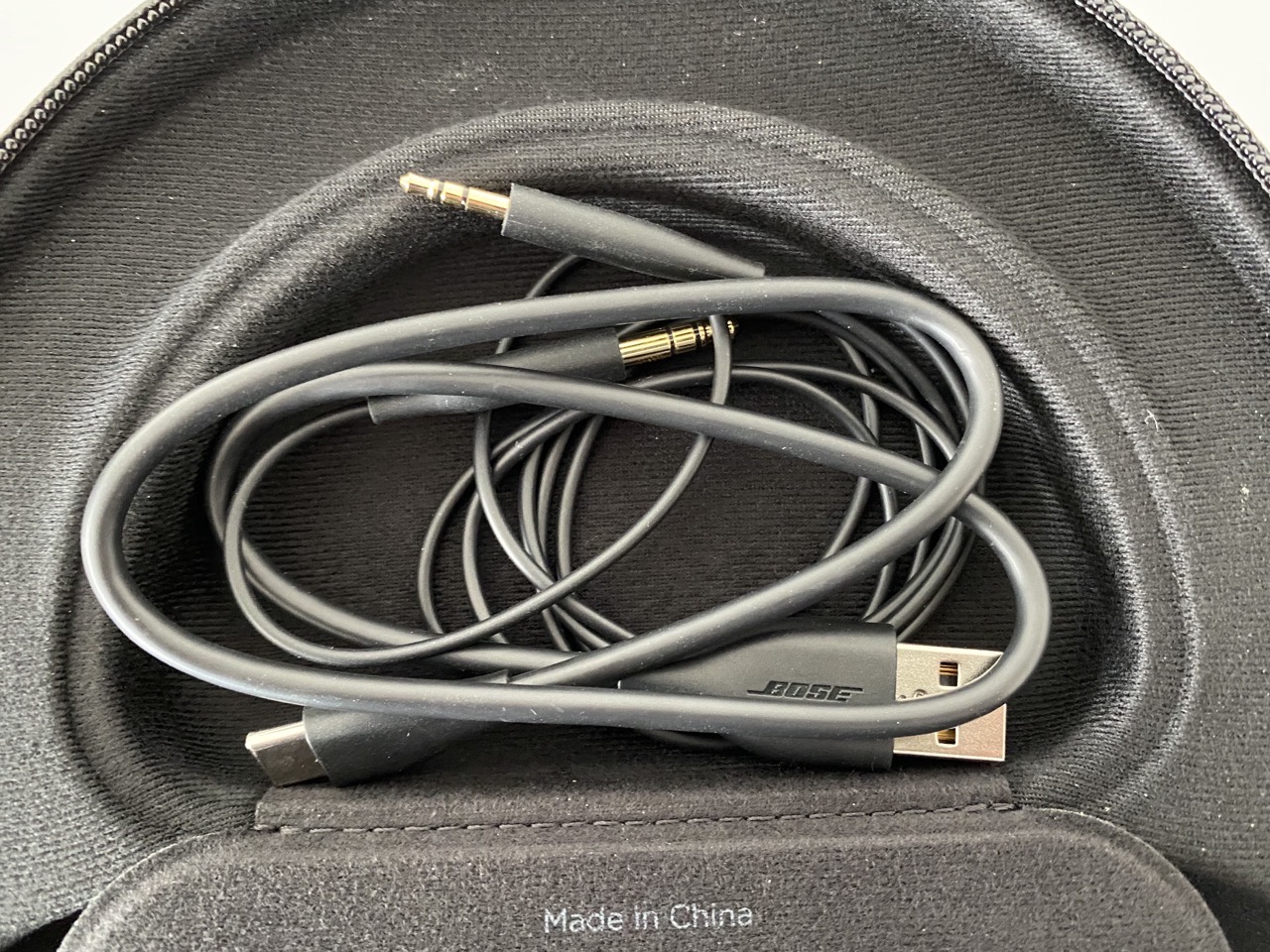
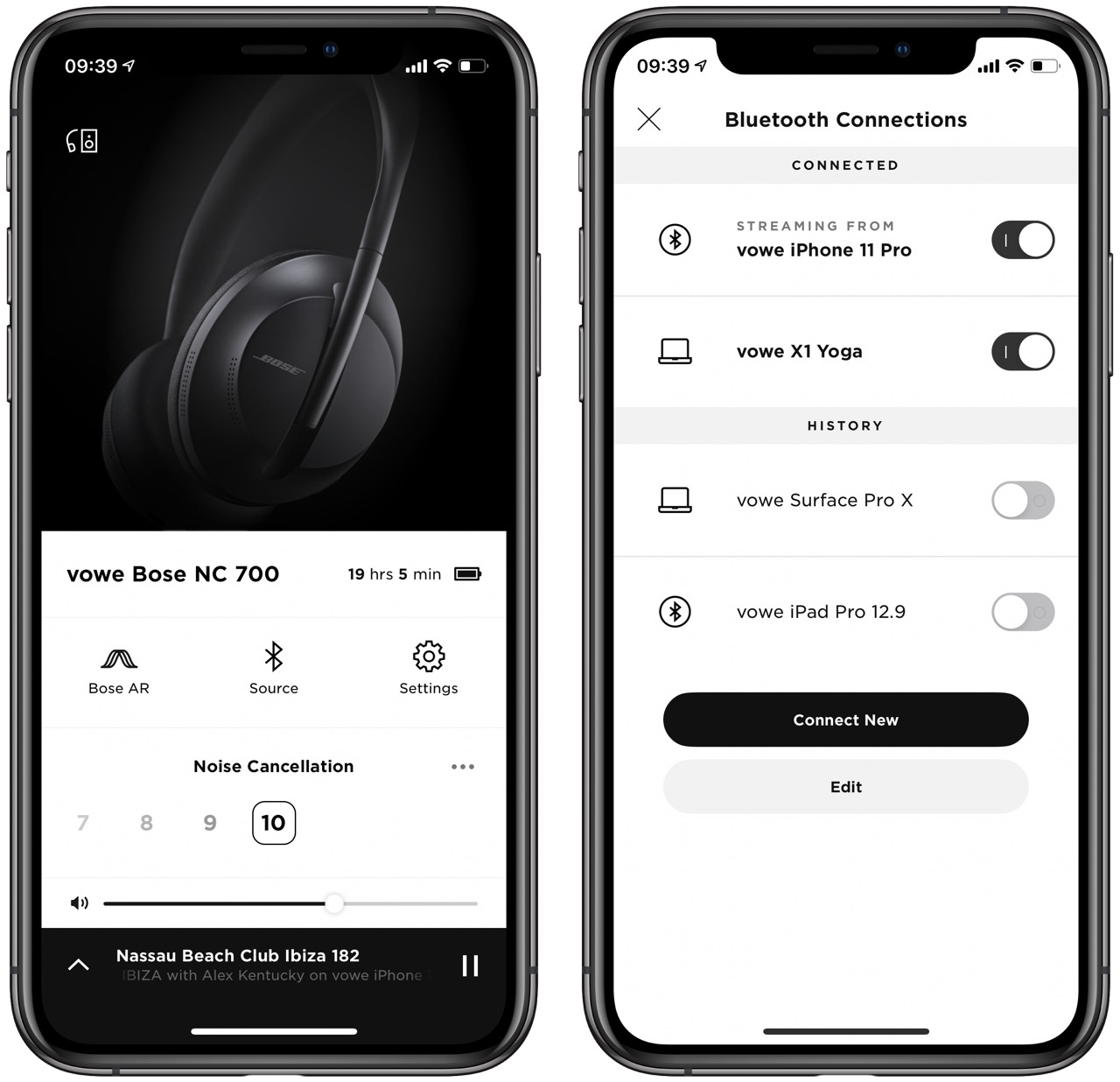


 into the new circumstance of working and schooling from home. For those with children, the job of “educate my kids” has not changed—it’s the same job they had before being in “lockdown.” But now they have to explore solutions in a completely different circumstance: at home vs. at school.
into the new circumstance of working and schooling from home. For those with children, the job of “educate my kids” has not changed—it’s the same job they had before being in “lockdown.” But now they have to explore solutions in a completely different circumstance: at home vs. at school.

 Celebrate and communicate success. Any time you innovate future success is unknown. Therefore, learning that an idea is not viable is a successful outcome—as long as that learning happened in a reasonably resource-efficient way. Celebrate a good thing that happens and communicate the good news widely.
Celebrate and communicate success. Any time you innovate future success is unknown. Therefore, learning that an idea is not viable is a successful outcome—as long as that learning happened in a reasonably resource-efficient way. Celebrate a good thing that happens and communicate the good news widely.

 Scott D. Anthony
Scott D. Anthony


